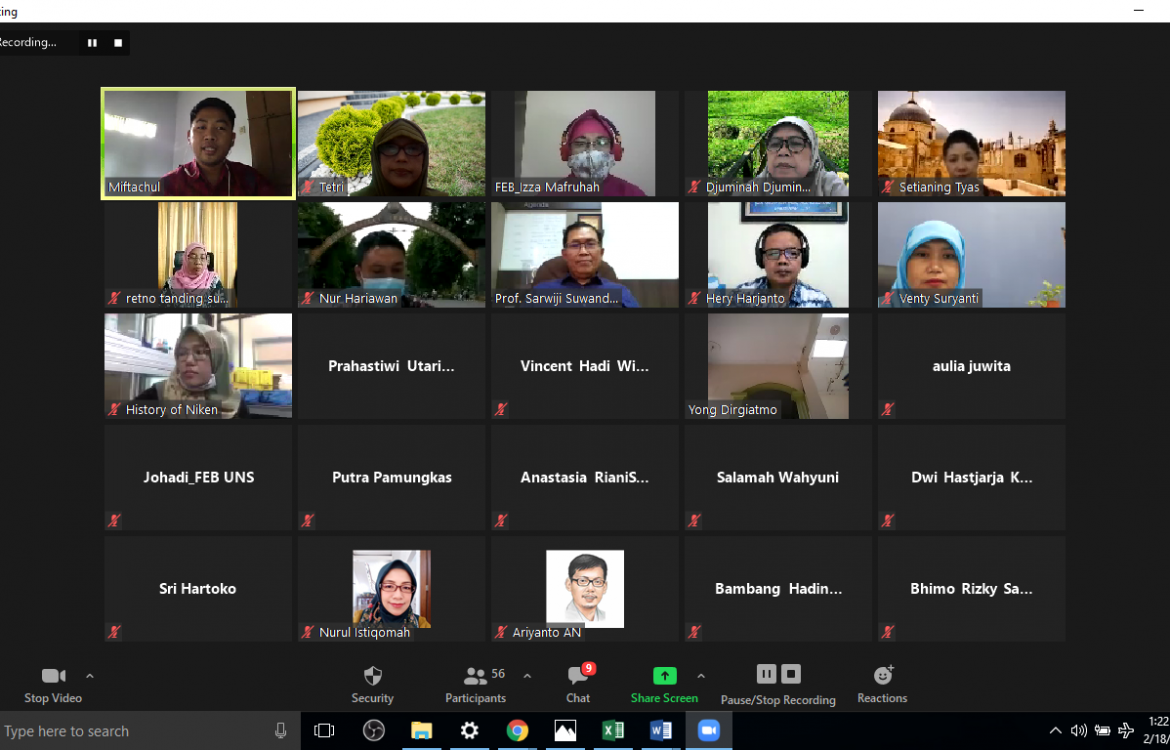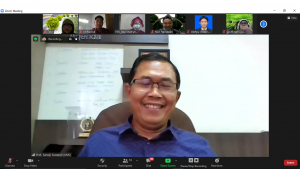
FEB UNS Held RPS Workshop, Discussing Case Method-Based Learning
Higher education must open new opportunities for students to develop their skills and actualizing their talent. This has become a great challenge for educators. Students must be facilitated to achieve great accomplishments and wasting their potential. Lecturers as an educator must reconstruct learning experience continuously. This was delivered by Prof. Dr. Sarwiji Suwandi, M.Pd., Chairman of the Institute of Educational Quality Assurance and Development (LPPMP) Universitas Sebelas Maret (UNS) Surakarta, when opening his material presented in the Worskhop of Case Method-Based Semester Course Plan (RPS) organized by the Faculty of Economics and Business (FEB) UNS, Thursday 18 February 2021.
 Prof. Sarwiji states that the learning paradigm has shifted. The learning process does not only require the students to learn but also the lecturers. Source of material become a crucial point. Lecturers must update their RPS periodically. The course plan must be adjusted if there is new literature or reference related to the current research.
Prof. Sarwiji states that the learning paradigm has shifted. The learning process does not only require the students to learn but also the lecturers. Source of material become a crucial point. Lecturers must update their RPS periodically. The course plan must be adjusted if there is new literature or reference related to the current research.
“Lecturer as a true learner prepare course plan read many references, and research result to be included in the course plan (RPS). With this we can be more assured that the learning outcomes will be better,” he explains.
Further, Prof. Sarwiji explains the learning method that must be applied according to the 7th Main Performance Indicator (IKU), the percentage of Bachelor and Diploma program that use case method or team-based project as evaluation assessment. The case method is participative learning based on a discussion process to solve a case or problem. The implementation of this method will hone and improve students’ critical thinking in problem-solving, communication skills, collaboration, and creativity.
“Implementing the case method, students should not be given an individual assignment, but a group assignment. This is because the problem in real life requires us to solve a problem collectively, using a different perspective, and various strategies proposed by team members,” he explains.
In the case method, students took the main role in problem-solving, while the lecturer only acts as a facilitator, who observe the discussion, inquiring, and leading the discussion. Using this method, students will be involved actively to improve their creative and critical thinking. Moreover, the insight from the solved cases will give them a real-life problem-solving experience. This method can also train students to instill a positive social attitude and helping students to receive others’ opinions.
The weakness of this method is the need for extensive preparation including tools, problems, and complex concepts, and sometimes there are no relevant cases to be discussed. (Humas FEB)

